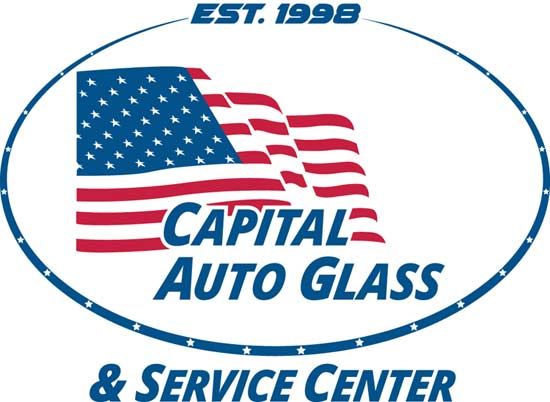Navigate with Confidence: Your Auto Glass, Repairs, and ADAS Questions Answered
-
Auto Glass Safety
We all know that our vehicle's windshields and other auto glass keep out wind, rain, and other annoyances while driving. However, did you know it has specific design elements that help keep you and your passengers safe?
It's true. Each auto manufacturer shapes and curves the windshield in specific ways that help ensure proper airbag deployment and keep the roof from caving in if a rollover accident occurs.
-
Selecting the Right Shop
Even when using your insurance for your new auto glass, you still have the right to choose which shop does the replacement or repair. When selecting a shop, be sure you're choosing one that implements the best practices set up by the Auto Glass Safety Council (AGSC). This will ensure that the correct glass, urethane, and proper installation techniques will be employed when installing the new windshield or other auto glass.
-
The Importance of Safety Systems Calibration
ADAS: Advanced Driver-Assistance Systems
Driving technology has grown by leaps and bounds in the past decade. Front-facing cameras mounted on or near your windshield have become a standard safety feature on modern cars and trucks. These cameras are part of your vehicle's Advanced Driver-Assistance System (ADAS). They are designed to protect you and your vehicle on the road.
After a damaged windshield is replaced, automakers specify that these systems must be recalibrated to ensure the safety features continue working as intended. At Capital Auto Glass, we typically can complete windshield replacement and ADAS calibration simultaneously.
-
Types of ADAS Calibration
- Dynamic Calibration – This type of calibration requires driving the vehicle at a specific speed range on well-marked roads to calibrate the camera system.
- Static Dual Calibration – This type of calibration requires the use of specific targets developed by the vehicle manufacturer. The targets must be placed at a specific distance in front of the vehicle, at the exact height and must be square to the front bumper. A diagnostic computer is used to work with the vehicles computer to ensure that the target is exactly where it is supposed to be and the camera is aimed exactly where it is supposed to.
- Dual Calibration – This type uses both Static and Dynamic.
We can perform most Dynamic and Static system calibrations at our shop. These systems protect drivers through a range of capabilities, creating a safety net around the vehicle to help reduce the risk of collisions. The front-facing cameras enable these advanced safety systems to aid and warn drivers. Some examples include traffic sign recognition, lane departure warning, lane keep assist, lane centering, automatic emergency braking, pedestrian detection, collision avoidance, and more. If so equipped, the camera's proper operation is critical to your vehicle's advanced safety system. The only way to ensure that the camera is aimed correctly after a windshield replacement is to ensure the calibration is completed after a windshield replacement. There are no warning signs or indicators if the vehicle thinks nothing has changed. This service must be performed at our location and is unavailable for mobile service at this time. We will offer mobile calibrations at a later date.
OEM Glass
-
OEM vs. Aftermarket Auto Glass
OEM stands for original equipment manufacturer. Meaning that the brand of the parts or glass in your vehicle is branded to the car manufacturer. In the auto glass world, the manufacturers sublet the production of their glass parts to a differnt company that manufactures glass. Using Toyota as an example, they sublet their glass parts manufacturing to Pilkington. If you have a Toyota with an original windshield, you will find both the Pilkington and Toyota logos. Toyota owns the tooling for the glass to be made and formed, but Pilkington actually makes the parts. Pilkington can only use Toyota-owned tools to make the Toyota OEM parts with a Toyota logo. When Pilkington wants to make their own, unbranded Toyota windshield, they have to backward engineer the glass part to make their own tools. Then they may not use the Toyota logo, because it was not manufactured using the Toyota tools. That is part of what makes the aftermarket a little different. The quality of the glass, breakability, and safety standards are the same, but the fit might be slightly different. Not having the OEM logo on the glass can literally save you hundreds, or even thousands of dollars while still getting the same protection.
-
Are OEM Auto Glass Replacements Worth the Money?
Most of the time choosing OEM is a personal preference. Many Jeep owners like to see the Jeep logo on the windshield that came from the factory. The only way to have that logo is to purchase the OEM Mopar brand glass. We have access to the Ford Carlite brands that have Super Duty, F150, Mustang, or others through our regular suppliers. The same is true with Mopar brand glass for your Dodge/Chrysler/Jeep. We can absolutely get you just about any brand of glass that you would like - Lexus, Toyota, Honda, Ford, Mopar, Mercedes-Benz, anything. If we cannot purchase it through our regular suppliers, we have other sources to get what you want. A general rule of thumb is that most insurance companies will not pay a specific brand of glass (OEM) for cars and trucks that are more than 2 years old. If you decide you really want that brand, and the insurance company will not authorize it, you can still get what you want, but you will probably have to pay the difference in addition to your deductible. We are here to help. Let us know what you want, and we will see what we can get authorized for you.
Want to learn more about our automotive glass or services? Call 877-70-GLASS today!






